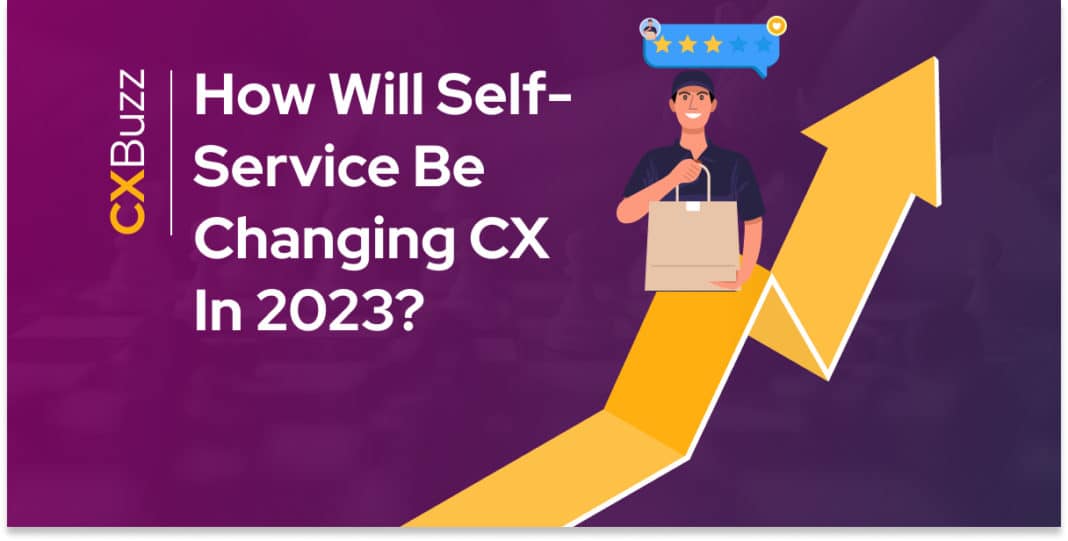This is a guest article by Harmanpreet Kaur, Digital Marketing Specialist at Knowmax
Customers frequently would rather solve their own difficulties than speak with a customer service representative. By offering them ways to solve their problems, a brand may make their consumers’ interactions easier and reduce the effort they have to make.
However, optimizing self-service solutions is a top priority for enterprise executives.
What’s the appeal of this strategy? Self-service solutions are adopted to increase operational efficiency and cut costs. By encouraging customers to look for answers to their queries online via messaging apps and conversational chatbots, businesses can cut down on live agent interactions and free them up to handle more complicated problems.
Customers can access assistance anytime, anywhere, rather than relying entirely on agents and telephone conversations that might need them to wait on hold.
After all, unless they have complex problems, most consumers avoid contacting human help. This is supported by research from Harvard business review, which found that 81% of customers prefer to find solutions to their problems without getting in touch with a business directly & only 5% prefer dealing with a human agent.
What is customer self-service?
Customer self-service is a kind of electronic support that enables end users to obtain information and carry out routine tasks using technology without the support of a live customer service agent.
CSS enables end users 24-hour-a-day support and immediate access to information without waiting for customer support professionals. Ultimately, the success of a customer self-service initiative relies upon the quality and quantity of information available and the simplicity with which it can be accomplished.
According to a survey on the newest technological trends, 70% of customers expect a company’s website to have a self-service application because self-service is their first preference.
How does Self-Service improve CX?
90% of your clients will go to your website and try to find a solution on their own before contacting you. They don’t want to repeat their query in various chats or have to phone your help team and wait in a long support queue.
You can’t afford to subject your consumers to poor customer service.
Your company will feel the effects right away because 58% of consumers believe they’ll “sever” their relationship with a brand if they receive poor customer service.
Fortunately, it’s simpler than ever to provide top-notch customer service, and all companies may benefit from creating a self-service hub.
What are the benefits of customer self-service?
Customer self-service offers a range of benefits to businesses, customers, and support employees alike:
Enhanced customer experience
Research shows that most consumers prefer to find the answers to their own concerns by themselves rather than contacting customer service: “Across industries, fully 81% of all customers attempt to take care of matters themselves before reaching out to a live person.”
Lower costs for support
Self-service enables the possibility of helping large numbers of customers. The cost of a DIY transaction is negligibly low: “The average cost of a live service experience is more than $7 for a B2C company and more than $13 for a B2B company.”
Boost in sales
Many customers will forego a transaction rather than deal with the unpredictable timing and outcome of creating a customer support request. 53% of U.S. internet adults are likely to cancel their online purchase if they can’t quickly obtain an answer to their query or find the resolution to their problem by themselves.
24/7 customer support
In addition to offering 24/7 support, you should encourage your clients to assist themselves at any time, anywhere. 90% of customers, according to Microsoft research, expect firms to provide self-service choices. Examples of these include a knowledge base, product FAQs, and tutorials.
A Few Instances Of Consumer Self-Service
Help Center articles
The Help Center creates a self-service channel without the additional administration of an Experience Cloud site and user profiles. Customers use a search function on web search engines like Google to find help center material.
A knowledge base is a tool that makes it simple to set up a customer support service.
You can publish FAQs and how-to articles, arrange those items into a logical taxonomy, and make your information simple to find through both search engines and your help center’s search tool.
FAQ page
Frequently Asked Questions is referred to as FAQ. Building a FAQ page for your website is the quickest method to start offering consumer self-service. Customer service agents typically have an excellent sense of the issues that matter most to your client.
An FAQ page offers answers to the most frequent queries clients have and is essentially a simplified form of a knowledge base.
One rule for smart FAQ design is to give links to alternative resources, such as a knowledge base with in-depth articles, a customer support phone number, or a live-messaging service.
Visual guides
Create visual how-to guides with step-by-step instructions on a platform that provides the greatest possible customer experience. An agent can more quickly and effectively respond to complicated consumer inquiries when they are presented in a visual format.
Visual device guides can be used as knowledge management tools to give users self-service options, improving customer satisfaction. Customers no longer need to call an agent, describe their issue, and ask for assistance because they can handle their problems on their own by following a few simple steps.
AI-powered chat and messaging
Today, AI-chatbots are everywhere customers are texting, and answering inquiries. This covers communications through websites, mobile apps, SMS, and social networks like Facebook Messenger and WhatsApp.
Customer service teams can expand their operations and offer always-on support at the convenience of the customer with the help of messaging and bots. Agents are now free to concentrate on the calls that actually require a human touch.
Automated contact center
Customer service still heavily relies on phone calls and supporting technology, even in the age of emails, texts, and direct messages (DMs). A customer calls a business to solve a problem without speaking to a live support worker in a self-service situation.
This form of consumer self-service is made possible through interactive voice response, or IVR. IVR can offer pre-recorded responses to commonly asked inquiries (FAQs), such as “What is your mailing address?” or “What’s the status of my order?”
Self-Service in CX: The Recent Trends
Self-Service is Absorbed by Artificial Intelligence
Without AI, much self-service software, including chatbots, devolves into generic, script-based, and confusing systems. As a result, they never evolve and can only handle the simplest of queries.
As opposed to this, AI-enhanced bots consume fresh data, develop over time, and produce better results for customers. Because of this, Deloitte predicts that the conversational AI market will expand at a rate of 22% per year between 2020 and 2023.
However, AI will also enhance other service options such as
- Proactive customer support
- Crowdsourcing forums
- Self-service portals
Pandemic-Driven Self-Service Adoption Will continue
Due to the COVID-19 pandemic, a number of companies temporarily closed their physical locations, and some also cut workers to comply with regulations. As businesses worked to relieve the stress on customer support, digital experiences, and self-service.
CX teams redesigned a wide range of customer journeys, from self-service eCommerce checkouts to automated form completion. Companies could then give clients the immediate successes they desired without overtaxing their personnel.
As a result, brands will probably use more and more intuitive solutions as self-service develops into a major, highly competitive area for consumer acquisition.
Solutions turn into Smartphone-Centric
Customers demand a seamless self-service experience whether they use a PC or a smartphone. CX teams must therefore take into account the compatibility of their solution across a variety of smartphone devices in addition to the PC.
Companies should also consider the route customers follow when they want to escalate a self-service experience on their smartphones. Is it simple to turn this conversation into a phone call or text message exchange?
Adopting omnichannel support in contact centers may provide a smooth escalation pathway while ensuring that the context of the self-service journey moves with the customer. Customers won’t have to repeat any information because agents may pick up where they left off in the conversation.
Conclusion
Customers of today are not only prepared for self-service, but they actually prefer it to other forms of assistance! However, a customer self-service portal will only be useful if it is simple to use. Your customer service knowledge base and FAQs must be simple to use, current, and visually appealing through the use of photos and videos in order to do this. It is necessary to organize the self-service portal. And finally, all content within the self-service portal must be optimized for desktop, tablet, and mobile users.
Author bio
Harmanpreet Kaur Digital Marketing Specialist at Knowmax, an AI-powered Knowledge Management software that takes care of all customer queries with easy-to-find knowledge capabilities.





